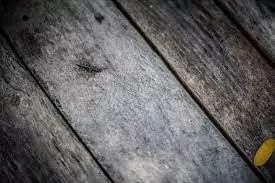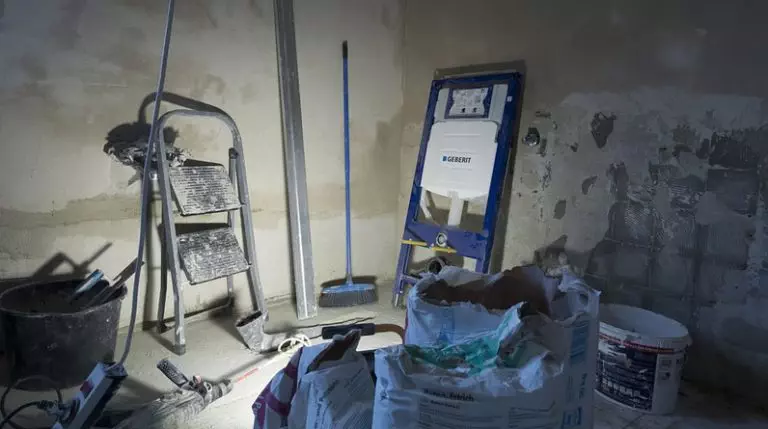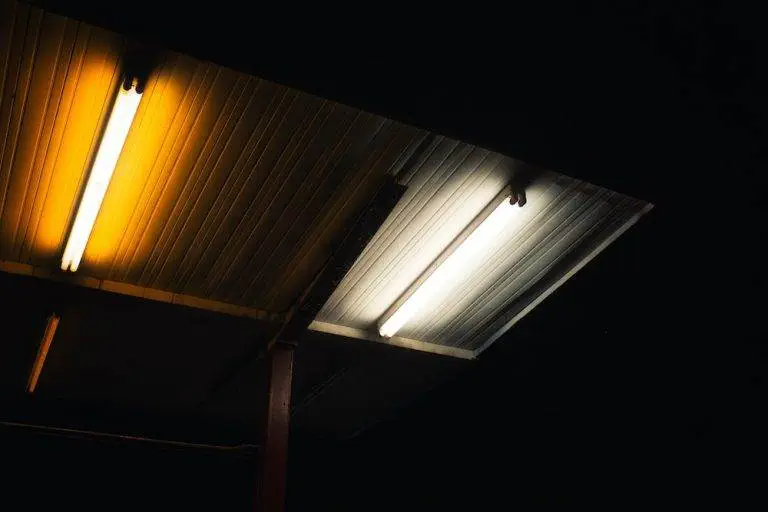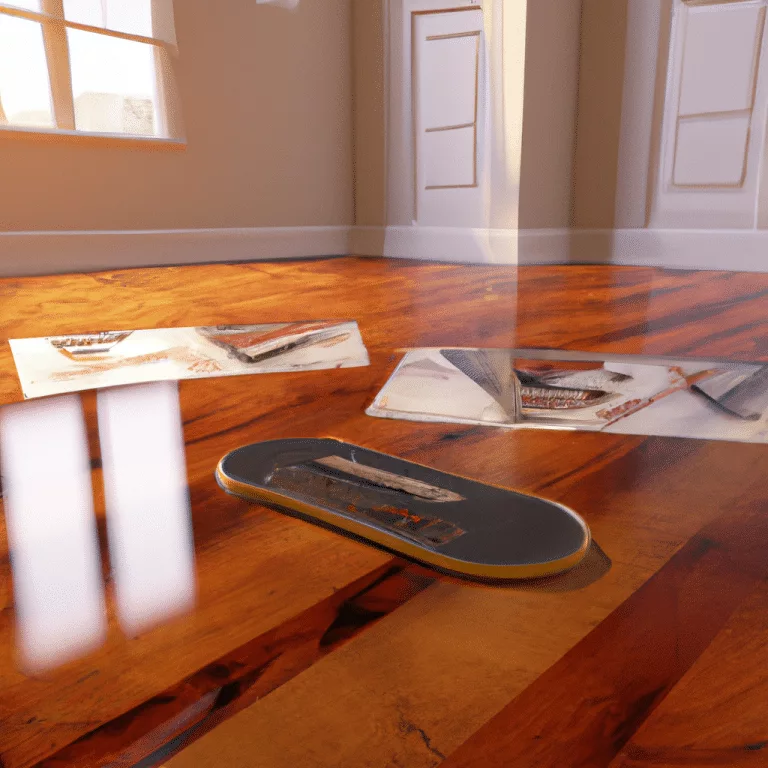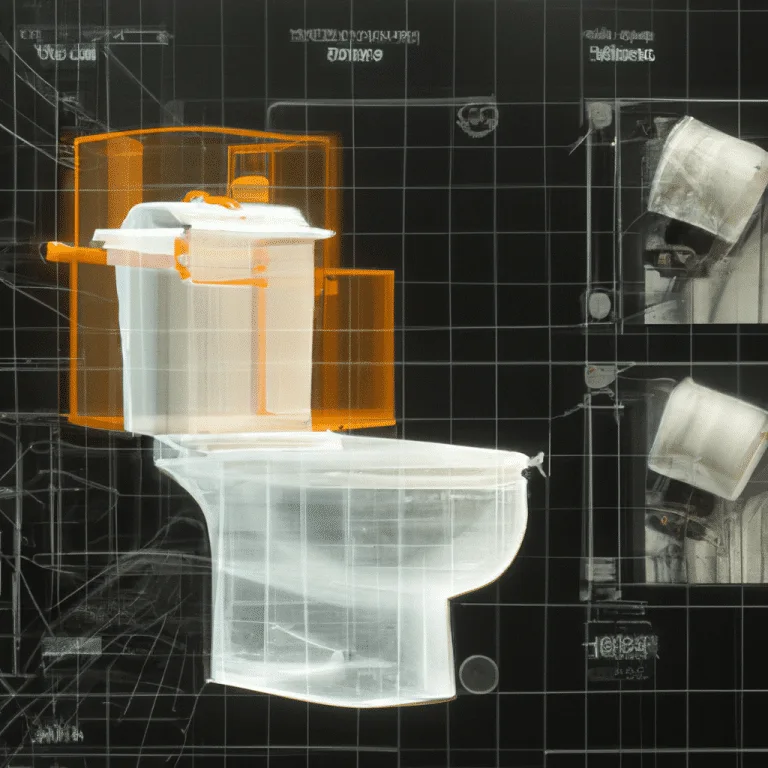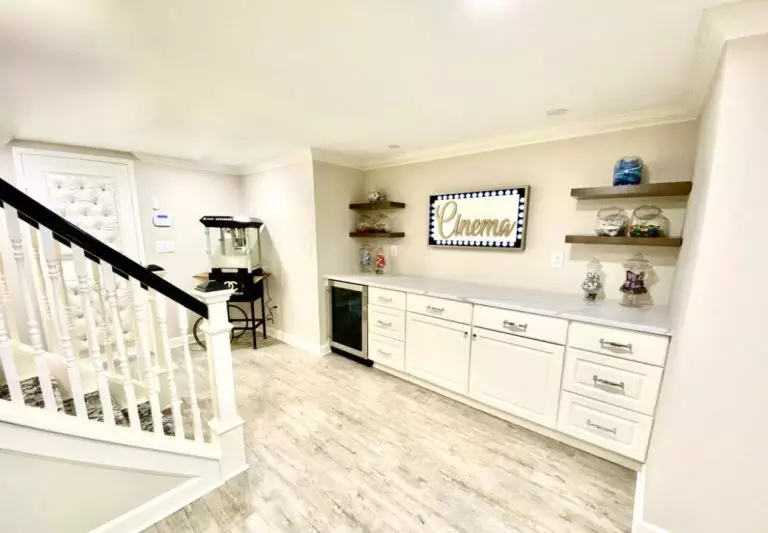Fixing a Squeaky Floor: DIY Tips from Experts
Do you have a squeaky floor in your home?
It’s a common problem that can be frustrating and even embarrassing. You may feel like you’re walking on eggshells, trying not to make any sound with your steps. But don’t worry – you’re not alone. Squeaking floors are a widespread issue in many homes, and they can be caused by several factors such as carpeting.
One of the most common causes of squeaky floors is loose boards or gaps between the subfloor and the surface, resulting in annoying squeaking sounds. This problem is particularly prevalent with hardwood floors, but it can also happen with carpeting.
If left unaddressed, the issue can worsen over time, leading to more significant problems. Checking the crawl space beneath the floor can help identify the source of the sound.
The good news is that repairing squeaking wood floors isn’t as daunting as it may seem. With a little know-how and some elbow grease, you can easily identify the source of the problem and take steps to secure the boards properly using shims.
While hiring a professional for wood floor repair may be an option for some people, plenty of DIY solutions are available that won’t break the bank.
In this post, we’ll explore how to repair a squeaking floor step-by-step, including how to find the source of the problem and what tools you’ll need. Whether you have hardwood floors or another type of flooring, we’ve got you covered.
So let’s get started with fixing those squeaky steps! To repair the issue, we may need to use screws to fix the problem area.
Common Causes of Squeaky Floors and Prevention Tips
Loose subfloors, gaps between the subfloor and joist, and loose nails or screws can cause floor squeaks.
Squeaky floors are annoying and can indicate an underlying issue with your house’s structure. The most common causes of squeaky floors are loose subfloors, gaps between the subfloor and joist, and loose nails or screws.
When you step on a squeaky floorboard, it moves slightly, causing friction between the board and other materials that make up the flooring system, such as joists, nails, or other boards. This friction is what creates the noise.
If you notice this problem in your home, it’s important to repair it as soon as possible to prevent further damage.
Loose subfloors can create a squeaky spot in your house, which occurs when there is a gap between the subfloor and the joist underneath it. This gap allows for movement in the subfloor and can be repaired by screwing it down to the joist.
Gaps can also be created by changes in humidity levels, causing the wood to expand or contract.
Loose nails or screws can also cause squeaks on wood floors. Over time, nails or screws may loosen due to wear and tear from foot traffic or even temperature changes causing them to shift around within their holes, creating a squeaky spot whenever you step on a gap.
- Replacement screws for Squeeeeek-No-More Kits # 3233
- Scored to snap perfectly every time.
- Works with carpet or vinyl or hardwood floors
- Quantity per package: 250
Last update on 2024-05-11 / Affiliate links / Images from Amazon Product Advertising API
Using adhesive to secure the subfloor, filling gaps with wood shims, and using longer nails or screws to secure the subfloor to the joist can prevent floor squeaks.
Preventing floor squeaks in your house involves securing all components of your flooring system tightly together so that they do not move against each other when weight is applied.
One step to fix a squeaky floor is to use adhesive to secure your subfloor firmly onto your joists.
Adhesive will fill any gaps that exist between these two components creating a more stable base for your flooring system.
Another step to prevent floor squeaks in your house is to fill gaps with wood shims. Wood shims are small pieces of wood that are used as spacers in construction projects. They come in various sizes and can be used to fill gaps between the subfloor and the joist.
Once the gap is filled, you can then screw or nail your subfloor into place.
As a crucial step in house construction, preventing floor squeaks is essential. Using longer nails or screws to secure the subfloor to the joist is another effective way of preventing floor squeaks.
Longer nails or screws will penetrate deeper into the joist providing a more secure hold for your subfloor, which can help close any gap and prevent future creaks.
Proper installation of flooring materials can also prevent squeaky floors, such as using a moisture barrier and allowing proper acclimation time for hardwood floors.
Proper installation of flooring materials is a crucial step in preventing floor squeaks in your house. One common mistake people make when installing hardwood floors is not allowing enough time for acclimation.
Hardwood floors need time to adjust to their environment before installation so that they don’t expand or contract after installation, which could cause gaps between boards leading to floor squeaks.
Another way to prevent floor squeaks during house installation is by using a moisture barrier. A moisture barrier prevents moisture from seeping through your flooring system, which can cause wood rot, mold, and other issues that could lead to floor damage and, eventually, floor squeaks.
Filling any gap between the subfloor and the flooring material can also help prevent floor squeaks.
Essential Tools for Fixing a Squeaky Floor
If you’ve ever walked across a squeaky floor in your house, you know how annoying it can be. Fortunately, fixing a squeaky floor is a simple project that can be done in just a few hours with the best tools.
What You’ll Need
Before getting started, here are the essential tools you’ll need for renovating your house with a floor system and hardwood floors.
- Drill
- Drill bit
- Wood screws
- Hammer
- Nail set
- Nails
- Utility knife
- Helper
Using Wood Screws to Secure Subfloor to Joist
The first step in fixing a squeaky floor in your house is to locate the noise source. Often, it’s caused by loose subflooring rubbing against the joists underneath. To fix this problem, use wood screws to secure the subflooring to the joists.
To fix squeaks in your house, drill pilot holes through the subflooring and into each joist using a drill bit that’s slightly smaller than your wood screws. Then, drive your wood screws into each hole until they’re flush with the subflooring surface.
Filling Holes with Wood Filler
After securing your subflooring with wood screws, you may notice small holes where the screw heads have sunk into the wood. Use wood filler to fill these holes and create an even surface for your flooring. This will help prevent any squeaks from developing in your house.
To use wood filler effectively in your house, clean out any debris from each squeak using a utility knife or nail set. Then, apply your best filler using a putty knife or similar tool until it’s level with your flooring.
Reducing Friction with Glue or Spray Lubricant
In addition to securing your subflooring with wood screws and filling any resulting holes with wood filler, you can also reduce friction between the subflooring and joists to prevent future squeaks. One way to do this is by applying glue or spray lubricant to the areas where your subflooring meets your joists.
To achieve the best results, apply a small amount of wood glue to the top of each joist before securing your subflooring with wood screws. This will help create the best bond between your subflooring and joists, reducing friction and preventing future squeaks.
Alternatively, you can use a spray lubricant like WD-40 to reduce friction between your subflooring and joists, which is the best way to prevent squeaks. Simply spray a small amount of lubricant onto the areas where your subflooring meets your joists, being careful not to overspray onto surrounding surfaces.
- ✅ EVERYTHING YOU NEED – Be prepared for any DIY floor installation tasks with this kit. It comes with a rubber mallet, a 12″ pull bar, a solid tapping block, 40 spacers, and a 10″ contour gauge.
- ✅ DUPLICATE ODD ANGLES – Copy odd-shaped angles and edges like a pro. The 10-inch duplicator gauge with lock is perfect for making accurate copies of curved corners, round edges, and tight trim angles.
- ✅ INSTALL MOST KINDS OF FLOORING – This laminate flooring installation kit is a must-have for DIY or professional use. This set may be used for installing laminate, vinyl, hardwood, or tile floors.
- ✅ BUILT TO LAST – You can expect all these flooring tools to stay in perfect shape for many years. Each one shows off solid construction, giving you peace of mind that they can withstand heavy duty use.
- ✅ CUSTOMER SATISFACTION – This floor installation kit is backed by a Limited Lifetime Warranty. If you’re not happy with this set, let us know within 1 year of purchase so we can issue a refund.
Last update on 2024-05-11 / Affiliate links / Images from Amazon Product Advertising API
DIY Methods for Fixing a Squeaky Floor
Shims: A Simple and Effective Solution
One of the best and most common causes of squeaky floors is gaps between the subfloor and the joist. Shims are the best simple and effective way to fix this problem. They work by filling the gaps, providing support, and eliminating movement that can cause noise.
To use shims effectively, you need to locate the source of the squeak. This can be done by walking around on the floor until you hear the noise. Once you have identified where it’s coming from, place shims in between the subfloor and joist at that location.
It’s crucial to ensure that your shims are placed correctly in the floor system to provide support and eliminate squeaks, especially during hardwood floor repair. If they’re not positioned properly, they won’t do their job effectively in fixing the squeaky floor.
Shimming is an excellent solution for fixing minor squeaks caused by small gaps between subfloors and joists. However, if there are larger gaps or more significant issues with your flooring system, it may be necessary to call in a professional.
Adhesive: Securing Your Subfloor
Another effective method for fixing a squeaky floor is using construction adhesive or wood glue to secure your subfloor to your joist. This will help eliminate movement between these two components, reducing noise caused by friction.
When using adhesive, make sure you apply it evenly across the entire surface area of your subfloor before securing it to your joist. You don’t want any unglued areas, as this could create new points of movement and cause additional squeaks.
The adhesive can also be used here if you’re dealing with squeaky and loose floorboards rather than gaps between your subfloor and joists. Simply apply it underneath any squeaky and loose boards before securing them back down into place.
Lubrication: Reducing Friction
Lubricants like powdered graphite can be applied to reduce friction between floorboards and joists, reducing squeaks caused by movement.
This is an excellent solution for those who want to fix the problem without removing any flooring components.
To apply powdered graphite for squeaky floor repair, sprinkle it onto the joints where you hear the floor squeak. Then, use a broom or brush to work it into the gaps of the floor system. The graphite will act as a lubricant, reducing friction and eliminating noise.
It’s important to note that while this method can effectively reduce squeaks, it won’t provide any structural support for your floor. If there are underlying issues with your subfloor or joists, they’ll need to be addressed before applying powdered graphite.
Professional Options for Fixing a Squeaky Floor
Securing from Above or Below
One of the most common ways to fix a squeaky floor is by securing it from either above or below. Securing from above involves screwing the subfloor to the joist while securing from below involves attaching blocking between the joists and screwing the subfloor to it.
Both methods can be effective in reducing or eliminating squeaks.
Securing from above is usually done by drilling pilot holes through the subfloor and into the joist, then inserting screws. This method can be more difficult if carpet or hardwood flooring is in place, as they will need to be removed first.
However, this method may be preferred if you want to avoid having access holes visible on your floor and to prevent squeaks.
On the other hand, securing from below involves accessing the basement or crawlspace beneath your floor to fix any squeak. Blocking materials such as wood strips or metal brackets are installed between adjacent joists without existing support.
Then screws are driven through these supports and into the subfloor. This method can be less invasive than securing from above since it doesn’t require removing any flooring materials.
Refastening Subfloor
Another option for fixing a squeaky floor is refastening the subfloor itself. Over time, nails used during construction may have loosened up, causing gaps between them and the joists, which cause creaks when weight is applied on top of them. Adding screws or nails can help secure it back down again.
Refastening can involve adding screws or nails to secure it to the joists, which can be done from either side of your floorboards, depending on accessibility preferences. Suppose you’re working with an older home with multiple flooring layers (e.g., carpet over hardwood).
In that case, refastening may not work because there’s too much space between layers for fasteners to hold onto anything substantial enough so that the squeaks go away.
Professional Options
If you’re uncomfortable with DIY methods, or if you have a particularly difficult case of squeaky floors, it may be time to call in a professional. A flooring contractor can assess the situation and recommend appropriate solutions based on your specific needs.
Professional options for fixing a squeaky floor may include accessing the basement or crawlspace to work on the underside of the floor. Professionals often prefer this method because it allows them to access all subfloor areas without removing any flooring materials.
They may also use specialized tools such as a joist finder or a drill with a depth control to ensure they are drilling into the right spot and at the correct depth.
Another option that professionals sometimes use is adding glue between the subfloor and joists. This can help reduce movement between these two surfaces, which often causes squeaks in the first place. While this method can be effective, it requires more expertise and should only be done by an experienced professional.
Measuring Damage and Cutting Support Blocks for Reinforcing Joists
Measuring the Depth and Length of the Joist Damage
Before cutting support blocks for the floor system, measuring the depth and length of the joist damage that may cause floor squeak is crucial. This will help determine how much support is needed and where to place the support blocks.
The depth of the damage can be measured using a ruler or tape measure, while the length can be measured by running a straight edge along the damaged area.
It’s important to note that water damage is often a culprit for floor squeaks. If you suspect water damage, it’s essential to locate and address its source before proceeding with any repairs.
Cutting Support Blocks Made of Construction Lumber
Once you’ve determined where support is needed, you can cut support blocks made of construction lumber to fit the gap between the joist and the blocking. These blocks should be cut slightly shorter than the distance between two blocking edges so they don’t push against them.
When cutting these blocks, ensure that they are cut straight and square on all sides. It’s also essential to use construction lumber as opposed to regular lumber since it has been treated with preservatives that protect against rotting.
Drilling Pilot Holes Before Screwing Support Blocks
After cutting your support block(s), drill pilot holes before screwing them into place on either side of the joist for added reinforcement. Doing this ensures you don’t split or crack your wood when screwing in your screws.
To drill pilot holes, choose a bit size slightly smaller than your screw head size. Then drill through your block and joist at an angle perpendicular to their surfaces.
- 🇺🇸【What Tapping Block Does】Pushes the tongue and groove or edges of resilient vinyl planks, laminate or hardwood flooring together creating a tight seam. Joins flooring planks without damaging the floor, Complete the installation of wooden floors. Heavy Big Block has a solid, ergonomic handle. No floor mallet necessary! This translates to faster, more accurate, more safe!
- 🇺🇸【No Flooring Mallet Needed】 Heavy big tapping block Made of HDPE-“High Density Polyethylene”. optimum balance and the ideal weight 2.7 LB, just rap 1-2times together planks into place. A more Efficient and Safer installation method that avoids finger smashing. Must-have tool for flooring professionals.Tool for Installation of Hardwood Floor, Vinyl Plank, and All Types of Laminate Flooring.
- 🇺🇸【Other Highlight Design】①LARGE WOOD HANDLE DESIGN – Non-slip, Easy to grip handle, easy to release force. ②SCREW EMBEDDED DESIGN – Screw Built-in, Not hurt floor. ③NON-MARKING TEXTURED SURFACE – that prevents scuffs and damage to flooring materials during installation. Unique edge design Smooth faces for extended life when striking Vinyl Plank.
- 🇺🇸【Satisfied or Get Full Refund】We make it our commitment to provide total customer satisfaction with all of our tools. If for any reason you’re are not completely satisfied, simply contact us and enjoy A COMPLETE REFUND! No questions! Furthermore, we offer a lifetime warranty against manufacturing defects.
Last update on 2024-05-11 / Affiliate links / Images from Amazon Product Advertising API
Locating Joists for Effective Squeaky Floor Repairs
Understanding the Role of Joists in Squeaky Floors
Joists are structural beams that support a floor and can help locate squeaks. They run horizontally beneath the surface of the flooring and provide stability to the subflooring.
When joists become loose or damaged, they can cause squeaks and creaks in the floorboards above them. Therefore, it’s essential to identify their location before making any repairs.
Identifying Joist Location
The distance between joists can vary, so it’s crucial to identify their location accurately. There are several ways to do this:
1. Check Blueprints or Building Plans
Blueprints or building plans will show where joists are located within a structure. If you have access to these documents, they can be a useful resource when locating joists.
2. Use a Stud Finder
A stud finder is an electronic device that detects metal objects behind walls or floors. Most stud finders have settings that allow you to detect wood and metal objects, making them ideal for locating joists under your flooring.
To use a stud finder, place it on your floor and move it along until it beeps or lights up to indicate the presence of a joist. Mark this spot with chalk or tape to reference it later.
3. Tap Along the Floor
If you don’t have access to blueprints or a stud finder, tapping along the floor is another way to locate joists manually.
Start by walking around your room in socks while listening for squeaks in your flooring. Once you’ve identified a squeak, place a piece of tape over its location.
Next, tap along the floor with a hammer until you hear a solid sound instead of a hollow one; this indicates that there’s something solid beneath your flooring – most likely one of the joists.
Mark this spot with chalk or tape to reference it later.
Continue tapping and marking until you’ve identified all the joists within your floor.
Enjoy a quieter home with these squeaky floor fixes
If you’re tired of hearing your floors squeak every time you take a step, it’s time to fix the problem. The good news is that fixing a squeaky floor isn’t as difficult as you might think.
First, it’s important to understand the common causes of squeaky floors and how to prevent them. From there, you’ll need to gather the essential tools for fixing a squeaky floor, including shims, adhesives, lubricants, and more.
Once you have your tools ready, you can use one of several DIY methods for fixing a squeaky floor. These may include shimming between joists or using adhesive to secure loose boards.
Alternatively, if DIY isn’t your thing or if the problem is particularly severe, you may want to consider professional options like securing from above or below or refastening the subfloor.
No matter which method you choose, it’s critical to measure damage accurately and cut support blocks to reinforce joists properly. You’ll also need to locate joists effectively before making any repairs.
In summary, by understanding what causes squeaky floors and taking steps to prevent them in the first place; gathering essential tools, using DIY methods or seeking professional help; measuring damage accurately; cutting support blocks correctly; and locating joists effectively – anyone can fix their squeaky floor at home.
Don’t let noisy floors disrupt your peace any longer! Follow these simple tips today and enjoy a quieter home tomorrow!
FAQs
Q: Can I fix my squeaky floor without professional help?
Yes! Fixing a squeaky floor is often something that homeowners can do themselves with basic tools and materials. However, if the problem is severe or if DIY isn’t your thing – hiring professionals might be the best option.
Q: What are some of the common causes of squeaky floors?
Loose boards, gaps between subflooring and joists, or worn-out nails often cause squeaky floors. They can also be caused by humidity changes, which cause wood to expand and contract.
Q: How do I know where to locate the joists when fixing my squeaky floor?
Locating joists is essential for effective repairs. You can use a stud finder or measure from an existing wall to find them accurately.
Q: Do I need special tools to fix a squeaky floor?
While you don’t need any specialized tools, having a few essentials like shims, adhesive, lubricant, and a drill can make the process much more manageable.
Q: Will fixing my squeaky floor add value to my home?
Yes! Fixing your squeaky floors will improve your quality of life and increase your home’s value if you plan on selling it in the future.
Q: How long does it take to fix a squeaky floor?
The time required to fix a squeaky floor depends on several factors, such as the severity of damage and whether you’re doing it yourself or hiring professionals. However, most repairs should take no more than a few hours to complete.
Q: Can I prevent my floors from becoming squeaky in the first place?
Yes! By taking steps like keeping humidity levels consistent throughout your home; installing flooring correctly; using screws instead of nails; and adding insulation between subflooring and joists – you can prevent your floors from becoming noisy in the first place.
